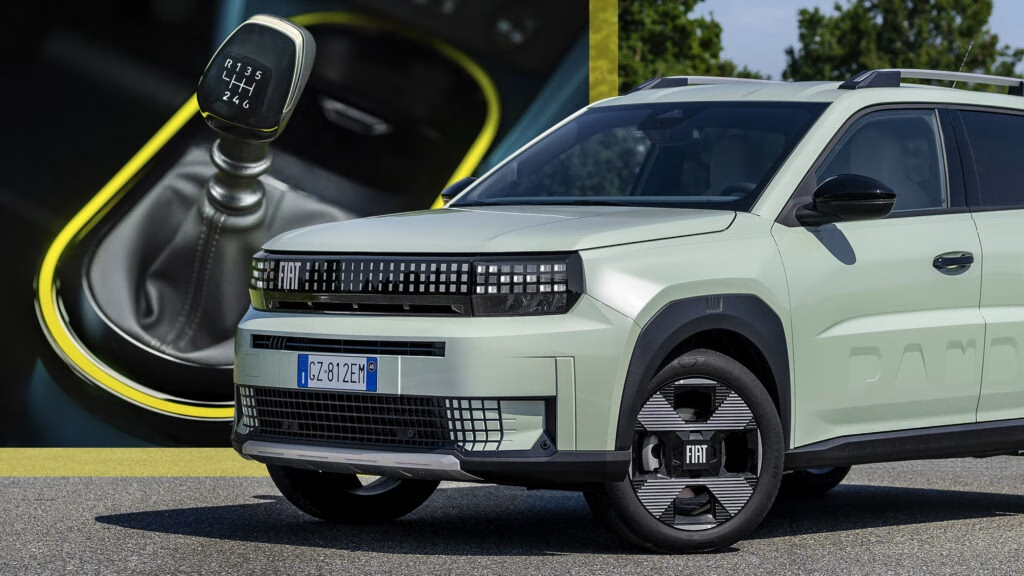Why is Fiat Adding a Pure Petrol Grande Panda When Everyone’s Going Electric?
It’s a fair question. With automakers racing to electrify their lineups, Fiat’s decision to launch an internal combustion engine (ICE)-only version of the Grande Panda seems almost contrarian. But here’s the thing: not every driver is ready to plug in just yet. In fact, a 2023 survey by the European Automobile Manufacturers’ Association found that nearly 60% of European car buyers still prefer petrol or diesel, citing concerns about charging infrastructure, upfront costs, and driving range. Fiat’s move is less about nostalgia and more about meeting real-world needs—especially for those who want simplicity, affordability, and the tactile joy of a manual gearbox.
What’s Under the Hood of the New Grande Panda Petrol?
Let’s get into the nuts and bolts. The ICE-only Grande Panda borrows its 1.2-liter turbocharged three-cylinder engine from other Stellantis siblings, like the Citroen C3. This little powerhouse delivers 99 horsepower and 205 Nm of torque—enough to keep city driving lively without guzzling fuel. It’s paired exclusively with a six-speed manual transmission, a combo that’s becoming rare in the subcompact segment. Start & Stop technology helps shave off a bit of fuel use in stop-and-go traffic, too.
Is It Slower Than the Hybrid or Electric Versions?
On paper, yes. The petrol Panda’s 99 hp trails the mild hybrid’s 109 hp and the EV’s 111 hp. But numbers aren’t the whole story. The manual gearbox means you’re more connected to the drive, and for many enthusiasts, that’s worth a few lost horses. Plus, the ICE model is expected to be lighter than its electrified siblings, which could translate to a more nimble feel on twisty roads or crowded city streets.
How Does the Petrol Version Differ Visually and Inside?
From the curb, you’d be hard-pressed to spot the difference. The petrol Grande Panda looks nearly identical to its hybrid and EV counterparts, minus the badges. The exhaust is discreetly tucked under the rear bumper, keeping things clean. Inside, though, the manual shifter takes center stage on the island-like center console—a nod to drivers who still love to row their own gears. It’s a small detail, but it changes the vibe of the whole cabin.
What Trim Levels and Features Can Buyers Expect?
Fiat keeps things simple with three trims: Pop, Icon, and La Prima. The Pop is bare-bones but honest—16-inch steel wheels, no infotainment screen, just a 10-inch digital instrument cluster and a dock for your smartphone. The Icon steps things up with full LED lighting, a 10.25-inch touchscreen, and six speakers. La Prima is the top dog, adding 17-inch wheels, automatic climate control, a rearview camera, and Fiat’s quirky Bambox dashboard. Seven color choices round out the personalization options, from classic Gelato White to bold Limone Yellow.
How Does the Grande Panda Petrol Stack Up on Price?
Fiat hasn’t dropped official pricing yet, but it’s expected to undercut the mild hybrid, which starts at €16,950 (about $19,700) in Italy. For context, the Citroen C3 with the same petrol engine starts at €15,900 ($18,500), while its mild hybrid version jumps to €20,950 ($24,300). The takeaway? The petrol Panda is likely to be the most affordable way into the lineup, making it especially appealing for budget-conscious buyers or first-time car owners.
Will There Be an All-Wheel Drive Option?
Not for the petrol-only model—at least, not yet. Fiat has confirmed that an AWD Grande Panda is in the works, but it’ll use an electrified rear axle, likely as part of a hybrid or EV setup. For now, all ICE versions are front-wheel drive. That said, the platform’s flexibility means Fiat could pivot quickly if demand shifts.
Who’s the Real Audience for the ICE Grande Panda?
This car isn’t just for die-hard manual fans or those wary of EVs. It’s aimed at urban drivers who want a no-fuss, affordable hatchback that’s easy to maintain and fun to drive. It’s also a smart move for markets where charging infrastructure is still catching up, or where government incentives for electrification haven’t made a big dent in consumer habits. Fiat’s strategy is pragmatic: offer choice, not ultimatums.
What Does This Mean for the Future of Small Cars?
The Grande Panda petrol is a reminder that the road to electrification isn’t one-size-fits-all. While hybrids and EVs are grabbing headlines, there’s still a big market for efficient, affordable petrol cars—especially in Europe’s dense cities and sprawling rural areas. Stellantis, Fiat’s parent company, is hedging its bets by offering a full spectrum of powertrains on a shared platform. That flexibility could be a blueprint for other brands navigating the transition.
The big takeaway? The new Grande Panda isn’t about perfection—it’s about smarter adjustments. Start with one change this week, and you’ll likely spot the difference by month’s end. Whether you’re chasing value, simplicity, or just the joy of a manual shift, Fiat’s latest move proves there’s still plenty of life in the humble petrol hatchback.

